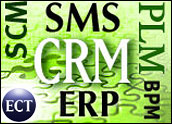
As the advent of new customer-facing technologies (such as social media platforms) changes the way consumers gather information about a particular company’s products or services, sales representatives are challenged to sell to a customer base that better understands the competitive landscape. As a result, companies realize that they must enable their sales force to work smarter, not harder, to acquire and retain customers.
In August 2008, Aberdeen surveyed 218 companies to understand how top-performing companies are positively affecting top-line revenue growth through improved sales performance strategies, capabilities and technological enablers. The report, publishing on Oct. 1, examines how top performers (the Best-in-Class companies) put their sales representatives in a position to succeed through a focus on overall sales structure, lead management and cross-functional integration.
You Call That a Lead?
To properly assess the best practices resulting in improved sales effectiveness, the issue of sales and marketing alignment must first be addressed. According to the March 2007 Aberdeen Benchmark Report, “Automating Leads to Sales,” 56 percent of Best-in-Class companies and 62 percent of Laggards indicated that sales and marketing alignment was a target for improvement. Furthermore, sales and marketing alignment is also a significant influence on technology implementation.
According to the July 2007 Aberdeen Benchmark Report, “Success Strategies in Marketing Automation,” nearly two-thirds of respondents (63 percent) ranked sales and marketing alignment as a top-two challenge to deploying marketing automation solutions.
While the ongoing struggle between sales and marketing departments concerning the quality and quantity of leads is not a battle that will easily be decided, prior Aberdeen research reveals that 80 percent of the Best-in-Class realize the importance of integrating lead qualification and measurement efforts between the two departments for the overall growth of the business.
Build the House on a Strong Foundation
For this upcoming report, Aberdeen used four key performance criteria to distinguish Best-in-Class sales organizations: 1) year-over-year performance in quota achievement, 2) year-over-year performance in sales cycle time, 3) year-over-year performance in bid-to-win ratio and 4) year-over-year performance in the percentage of time sales representatives spend on administrative tasks.
As the challenges associated with lengthening sales cycles and low sales productivity continue to mount, the savvy sales manager continues in the search for the perfect mix of organizational processes and sales automation solutions. Survey results show that the firms enjoying Best-in-Class performance shared several common foundational characteristics, including:
- Formal and documented sales processes (85 percent)
- Defined performance metrics to measure sales effectiveness (76 percent)
- Executive-level support for sales productivity tools (63 percent)
- Formalized sales training program (53 percent)
With these foundational elements in place, the organization can begin to focus on building a sustainable competitive advantage through differentiated process, organizational, measurement and technological capabilities.
Building a Best-in-Class Sales Organization
Based on the findings in this upcoming report, Aberdeen suggests that companies must focus on the following to achieve Best-in-Class performance:
- Define performance metrics to measure sales effectiveness. As the old saying goes, “you can’t manage what you don’t measure.” Currently, only 45 percent of the Industry Average companies have defined performance metrics in place designed to measure the effectiveness of the sales department, compared to 76 percent of the Best-in-Class. In order to garner the support of senior management and receive the proper resources, companies must demonstrate the benefits, or lack thereof, that defined sales processes and technology implementation have on the company’s bottom line. Nearly a quarter (24 percent) of the Industry Average companies that do measure sales performance do so on a monthly basis only. Only 16 percent of the Industry Average measure sales performance in real-time or on a daily basis, compared to 30 percent of the Best-in-Class that track sales performance over the same time period. The pathway to sales productivity can only be successfully navigated once businesses understand where the roadblocks lie.
- Focus on team-based collaborative selling. It is essential for companies to address the structure of their sales departments before making any investment in technology. By organizing the sales hierarchy and creating teams, companies are able to positively affect sales performance through collaborative selling. Currently, 43 percent of the Industry Average, compared to 56 percent of the Best-in-Class, utilize team-based collaborative selling strategies. If it is true that “no man is an island,” then organizations must consider providing various degrees of support, such as subject matter inquiries or visibility into other reps’ prospects and contacts, in the form of a team-based collaborative environment. The additional 28 percent of Industry Average companies that plan to implement such an organizational capability must do so before the focus shifts heavily to technology implementation.
- Focus on lead management. As a way of ensuring that high quality leads enter the pipeline, Best-in-Class companies have instilled an organizational focus on lead management and lead management solutions. Currently, 42 percent of Best-in-Class companies, compared to 26 percent of Laggards, integrate a lead management solution with an existing CRM. Fifty-nine percent of Best-in-Class companies indicated that they decreased the amount of time between pipeline stages, compared to 9 percent of the Industry Average and 4 percent of Laggards. By reducing the amount of time it takes for a lead to receive the necessary sales attention, Best-in-Class companies are better able than their counterparts to quickly target and contact prospects.
- Focus on data quality. Before a company can start to integrate data from various customer-facing channels into a sales solution (such as CRM), care must be taken to ensure the quality of the data. Customer data should be “scrubbed” to identify incomplete contact information or multiple entries for the same contact, for example. Currently, just over a quarter of Best-in-Class companies (27 percent) leverage data quality solutions. An additional 40 percent of Best-in-Class companies plan to leverage such solutions in the future. An early focus on customer data quality translates into more usable information when an enterprise is ready to integrate disparate data silos.
- Integrate data from disparate silos. Once an organization takes the necessary steps to ensure the quality of its customer data, the next step should be to integrate the data from various data silos into a centralized repository that is accessible by all departments within the organization. Forty-two percent of Best-in-Class companies currently utilize data integration solutions, compared to 28 percent of Laggards. Despite the fact that nearly half of Best-in-Class companies currently use data integration solutions, 59 percent of Best-in-Class companies surveyed indicated that they plan to increase the focus on data integration in the next 12 to 24 months. Best-in-Class companies looking to provide sales representatives with a unified view of customers and prospects must take the steps to ensure the representatives have access to information that exists throughout the enterprise.
In order for a company to truly impact sales effectiveness, there must be an organizational focus on sales structure and compensation management, lead management, and the use of sales automation solutions. By achieving harmony between these three things, Best-in-Class companies are able to improve key sales metrics. For example, nearly two-thirds (65 percent) of Best-in-Class companies experience year-over-year improvement in sales contribution margin, compared to 11 percent of Laggards. As a new age of customers becomes increasingly adept at accessing company information and better understanding the competitive landscape, businesses are forced to equip their sales forces with the tools that enable them to work smarter, not harder. By integrating customer data from disparate data silos, as well as providing the necessary organizational support, Best-in-Class companies are nearing that elusive 360-degree view of the customer.
The Aberdeen report — “Sales Effectiveness: Pathways to Productivity” — will be available to download for free starting on Oct. 1, 2008.
Andrew Boyd is the chief research officer for the Aberdeen Group. Currently, his personal research agenda focuses on customer-centric business models, the optimization of market-to-order processes and understanding the after-sales customer experience. He can be reached at [email protected]. Alex Jefferies, Sr. Research Associate, is the primary author of this report. He can be reached at [email protected].















































I’m especially in agreement with your views on building a solid foundation. In my posting, http://garywiram.wordpress.com/2008/09/20/the-tech-savvy-sales-organization/, I emphasize the need for personal commitment in doing this.